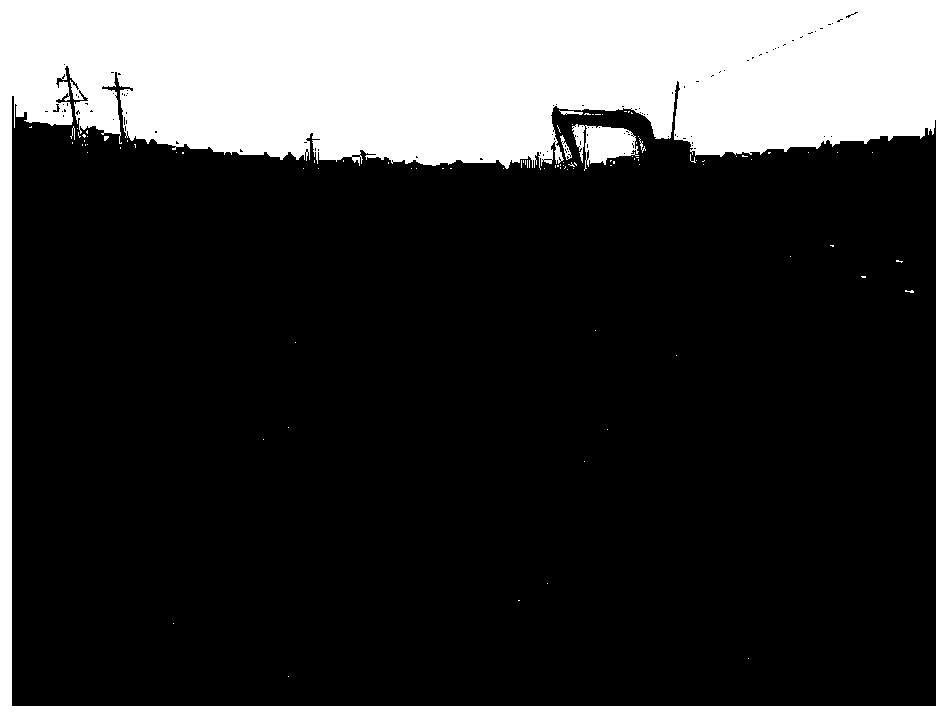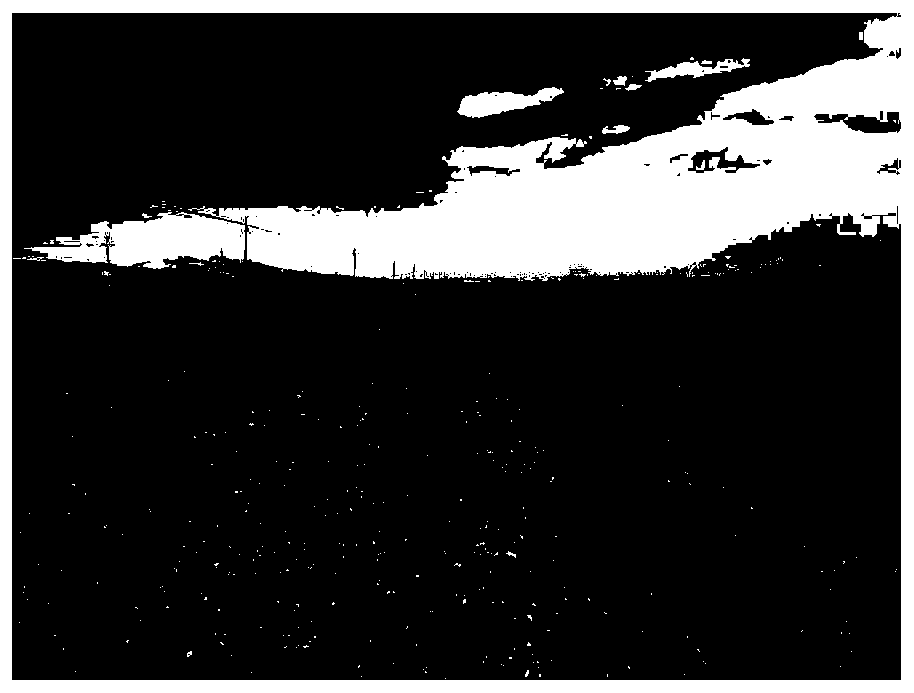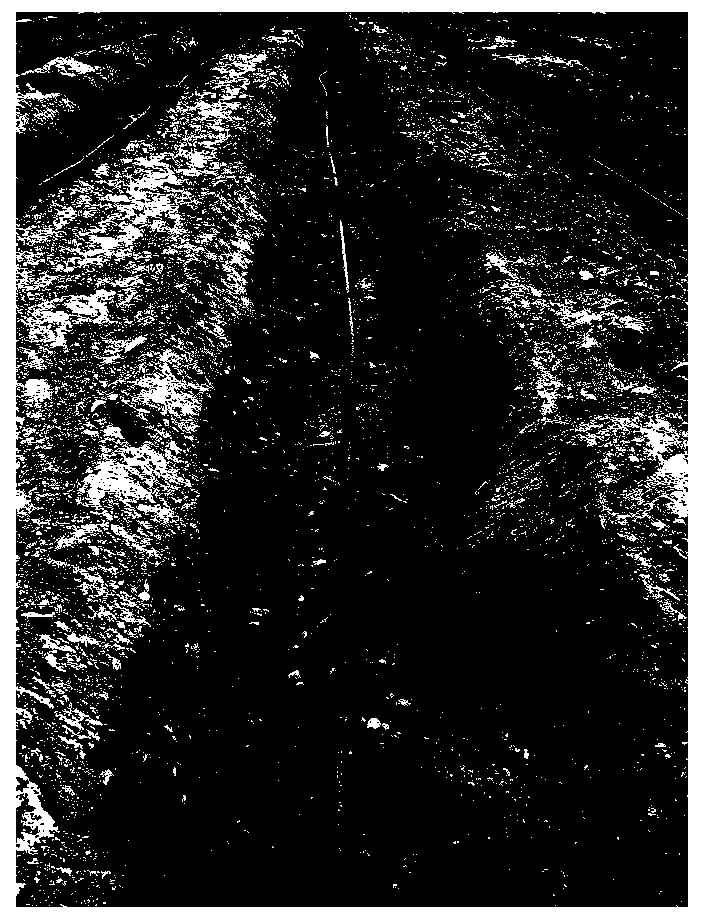Method for afforestation in gobi by using hybrid broussonetia papyrifera
A Gobi and tree-building technology, applied in the field of afforestation, can solve the problems of rough texture, difficult afforestation, and high labor costs, and achieve the effect of saving afforestation costs and improving water and fertilizer utilization efficiency
- Summary
- Abstract
- Description
- Claims
- Application Information
AI Technical Summary
Problems solved by technology
Method used
Image
Examples
Embodiment 1
[0039] Afforestation time: early April.
[0040] Seedbed preparation: Use a bulldozer to level the Gobi Desert, and use an excavator to dig a planting ditch every 50 meters. The bottom of the ditch is 1 m wide, the ditch is 30 cm deep, and the side length is 1.5 m wide.
[0041] Drip irrigation system preparation: use PE material pipes, the main pipe is 160mm, the secondary main pipe is 75mm, the branch pipe is 25mm, and the distance between drippers is preferably 1 / m. After the installation is completed, flood the water twice.
[0042] Planting hole preparation: the planting hole is 30cm square, mix 20g of slow-release fertilizer and 50g of water-retaining agent with fine sand and place it at the bottom of the hole with a depth of 10cm.
[0043] Seedling preparation: the planted seedlings are biennial bare-rooted seedlings, and the diameter of the rhizosphere is kept at 25 cm.
[0044] Planting: The row spacing of planting plants is 100cm×80cm, and one row is planted along ...
Embodiment 2
[0047] Afforestation time: early April.
[0048] Seedbed preparation: Use a bulldozer to level the Gobi Desert, and use an excavator to dig a planting ditch every 50 meters. The bottom of the ditch is 1 m wide, the ditch is 30 cm deep, and the side length is 1.5 m wide.
[0049] Drip irrigation system preparation: use PE material pipes, the main pipe is 160mm, the secondary main pipe is 75mm, the branch pipe is 25mm, and the distance between drippers is preferably 1 / m. After the installation is completed, flood the water twice.
[0050] Planting hole preparation: the planting hole is 30cm square, mix 20g of slow-release fertilizer and 50g of water-retaining agent with fine sand and place it at the bottom of the hole with a depth of 10cm.
[0051] Seedling preparation: the planted seedlings are annual container seedlings with non-woven bags.
[0052] Planting: direct planting with non-woven bags, the row spacing of planting plants is 100cm×80cm, each planting ditch is planted...
PUM
 Login to View More
Login to View More Abstract
Description
Claims
Application Information
 Login to View More
Login to View More - R&D
- Intellectual Property
- Life Sciences
- Materials
- Tech Scout
- Unparalleled Data Quality
- Higher Quality Content
- 60% Fewer Hallucinations
Browse by: Latest US Patents, China's latest patents, Technical Efficacy Thesaurus, Application Domain, Technology Topic, Popular Technical Reports.
© 2025 PatSnap. All rights reserved.Legal|Privacy policy|Modern Slavery Act Transparency Statement|Sitemap|About US| Contact US: help@patsnap.com



